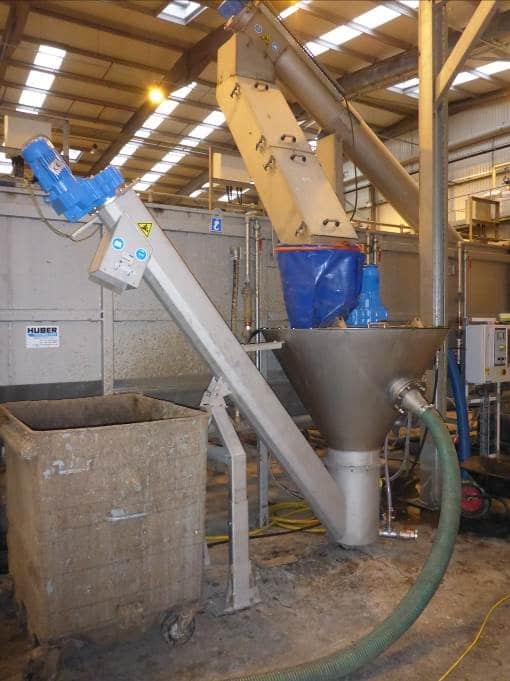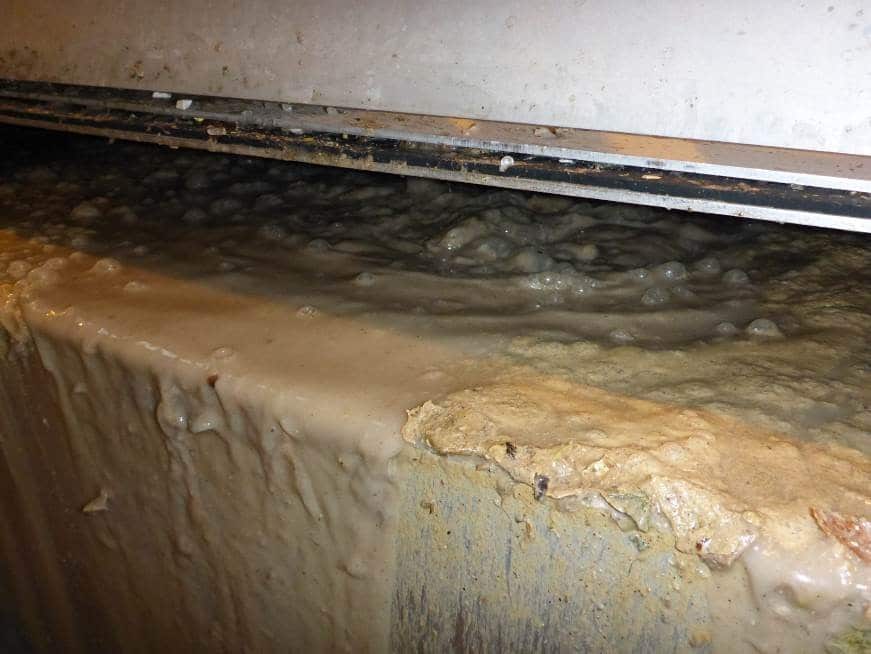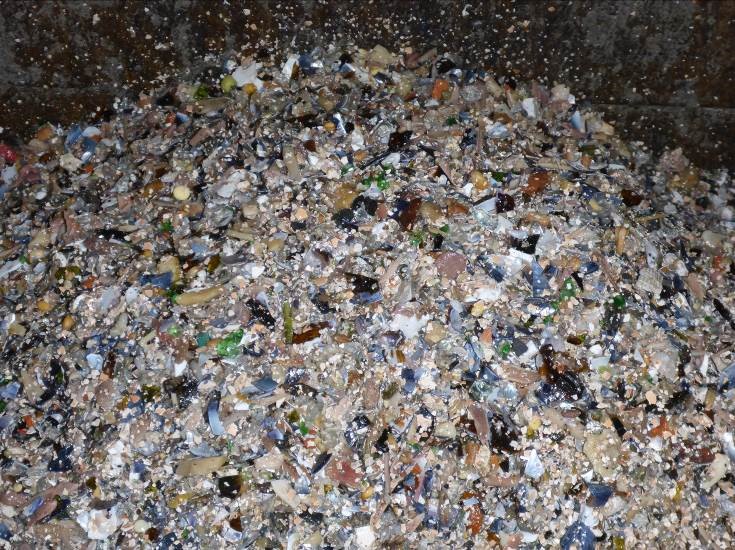MEMBER PRESS RELEASE - Vogelsang to present the HiCone for the wastewater sector at IFAT…
MEMBER’S PRESS RELEASE: Heavy fraction removal without organic removal
Huber Technology: Within supermarket and source segregated food waste there is a small percentage of grit and glass which causes AD operators pipe blockages, abrasion, reduced capacity and costly cleaning routines to remove.
When designing the AD plant at Westcott Park in Buckinghamshire, Shanks purchased a longitudinal grit trap from Huber to remove most of this heavy fraction. Whilst this grit trap with aeration captures the heavy fraction there is also percentage of organics and water in the removed portion.
The inorganic heavy fraction is certainly better out of the soup (feed) than causing downstream problems but disposal of the removed slurry has to be carefully considered as it does not meet APB requirements and it is a non-stackable slurry.

Slurry from grit trap
Solution
Huber have developed a grit washer based on their well proven grit washer but with some special features to suit the bio industry. Air is used to aid organic separation from the grit and PLC control sequences the separation process and draining process.

Trial grit washer
Results
It is estimated that 3% of the weighbridge feed was removed in the initial settlement channel. By washing and draining the heavy fraction the weight of the heavy fraction is reduced to less than 1% of the weighbridge feed weight. The other ~2% is comprised of water and organics and these are returned to the soup.
The returned water being rich in biomass gives a 1% increase in gas yield and in addition aids the water balance in the system.

Overflow containing the organics to be returned to the flow
The ~1% inorganic heavy fraction comprises of grit, glass, eggshell, bone and seashell all of which should be removed from the soup to avoid downstream problems, plant inefficiency and down time.

Close-up view of heavy fraction comprising grit, glass, eggshell and bone
Conclusion
Removing just these contaminants stops much of the problems that AD food waste plants suffer with silting up. Some plants are shutting down at 12 hour intervals due to grit and glass problems, others have major pump wear problems and others have a digesters substantially full of inorganic matter that is difficult and costly to remove. This must effect the retention time and subsequent gas yield. Installing a grit collection channel and grit washer removes the heavy fraction and puts the organics back into the soup where it can contribute to the gas production.
Ray Nattrass of Shanks commented:
Grit was a key concern in the design of the Westcott Park AD facility. I was keen to ensure that as much as possible was removed before it could cause downstream problems. We have worked closely with Huber from the start of the project and the grit washer was a joint development exercise to explore ways of reducing the disposal costs associated with the grit fraction. The grit washer has proven to be very successful. Huber has supported the work throughout and I am pleased that their focus has been on solving our problems and helping Shanks to make more from waste.
For more details contact Tony Clutten
Huber Technology
Tel. 07525224521 or
E-mail tc@huber.co.uk



